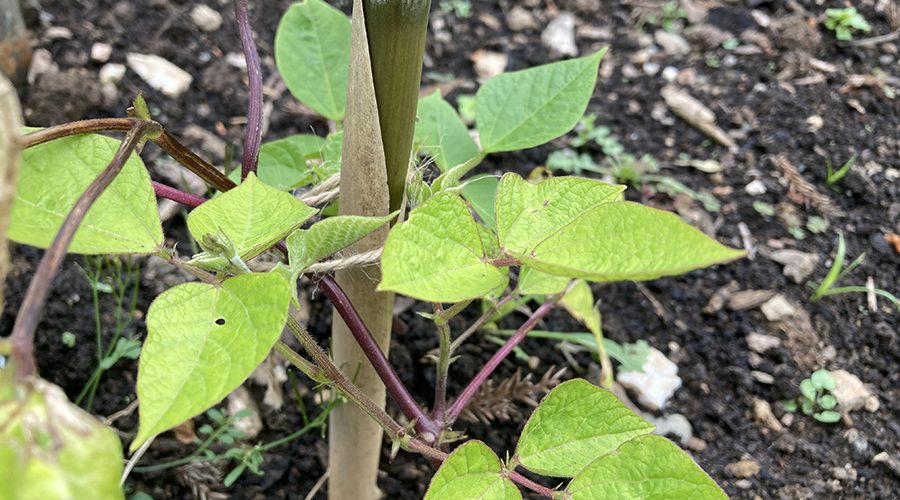Why feeding your plants is a good idea
Giving your plants a liquid feed regularly during the summer is the best way to boost the nutrients in the soil for your veggies and help to keep them healthy and thriving. A feed will benefit all vegetable plants, but will be especially helpful for those that produce fruits (courgettes, cucumber, tomatoes etc) as well as leafy green veg plants (spinach, chard, salads.)
Signs that a plant needs extra nutrients from a feed
Often, you’ll know a plant could use a liquid feed by discolouration in its leaves. This is especially true if you’re fairly sure that lack of water or cold weather isn’t a problem – so in the height of the summer, if the leaves are very yellow or pale, but the soil is moist and the temperatures are warm, then a liquid feed would be a good idea. (It isn’t always the answer, as sometimes there may be other problems, but it’s a good first port of call)
How often to feed plants
For fruiting plants, we’d suggest feeding them once a couple of weeks after planting, and then every fortnight from when they start to flower.
For leafy plants, like salads and spinach, a liquid feed in early summer (early June) and midsummer (July) should be enough to replenish nutrients.
What about other plants?
You could certainly use your feed for other plants too – herbs, cut flowers, fruit etc. If you’re buying a feed, just check its application directions to be sure. If making your own from wormcast, comfrey or nettles (as below) you can use this wherever you feel plants need a little extra oomph.
What to use?
You can easily buy a liquid feed from the local garden centre. If possible, choose an organic liquid feed with seaweed (that’s our preference, at least). You can also make a feed at home in one of the following three ways:
Make a wormcast tea
This is fairly quick and easy, and a good option if you’re just watering a few crops using a watering can. Just mix 2 handfuls of wormcast fertiliser in a watering can, leave for 5 minutes and then stir really well before watering your crops.
Make a comfrey feed
Comfrey can be used as a brilliantly rich, natural fertiliser in organic growing. It draws loads of nitrogen and other nutrients from the soil and stores it all in its leaves. The leaves thus become an instant superfood for other plants and can be used to make a powerful liquid feed, a mulch, a compost accelerator and all sorts of other handy things.
To make a comfrey feed, wait until the plants reach approximately 80cm and then cut the leaves off to leave about 8cm growth on the plant. You can do this several times in the season, until September. Break the leaves up and pop them in a container of water. Leave the mixture, covered or under cover, for between 2 and 4 weeks until it turns a nice light tea colour (if it goes too dark just add more water as it’s a little over concentrated). It’ll become very stinky which is a sign that it’s rich and ready to use!
Use the liquid to feed your veg plants and then throw the rotten leaves into the compost heap, or use them as a mulch.
Make a nettle feed
This is a good idea for those who have patches of nettles growing in corners of the garden. It’s a good way of cutting them back and making use of them rather than digging them up or strimming them to keep them under control.
It is made in the same way as a comfrey tea, described above. With long sleeves and gloves on, cut down your nettles and soak them in a bucket of water for about a week. The water then makes a very good liquid feed, full of nutrients for your veg. The soggy, wilted nettles can be added to the compost heap.

